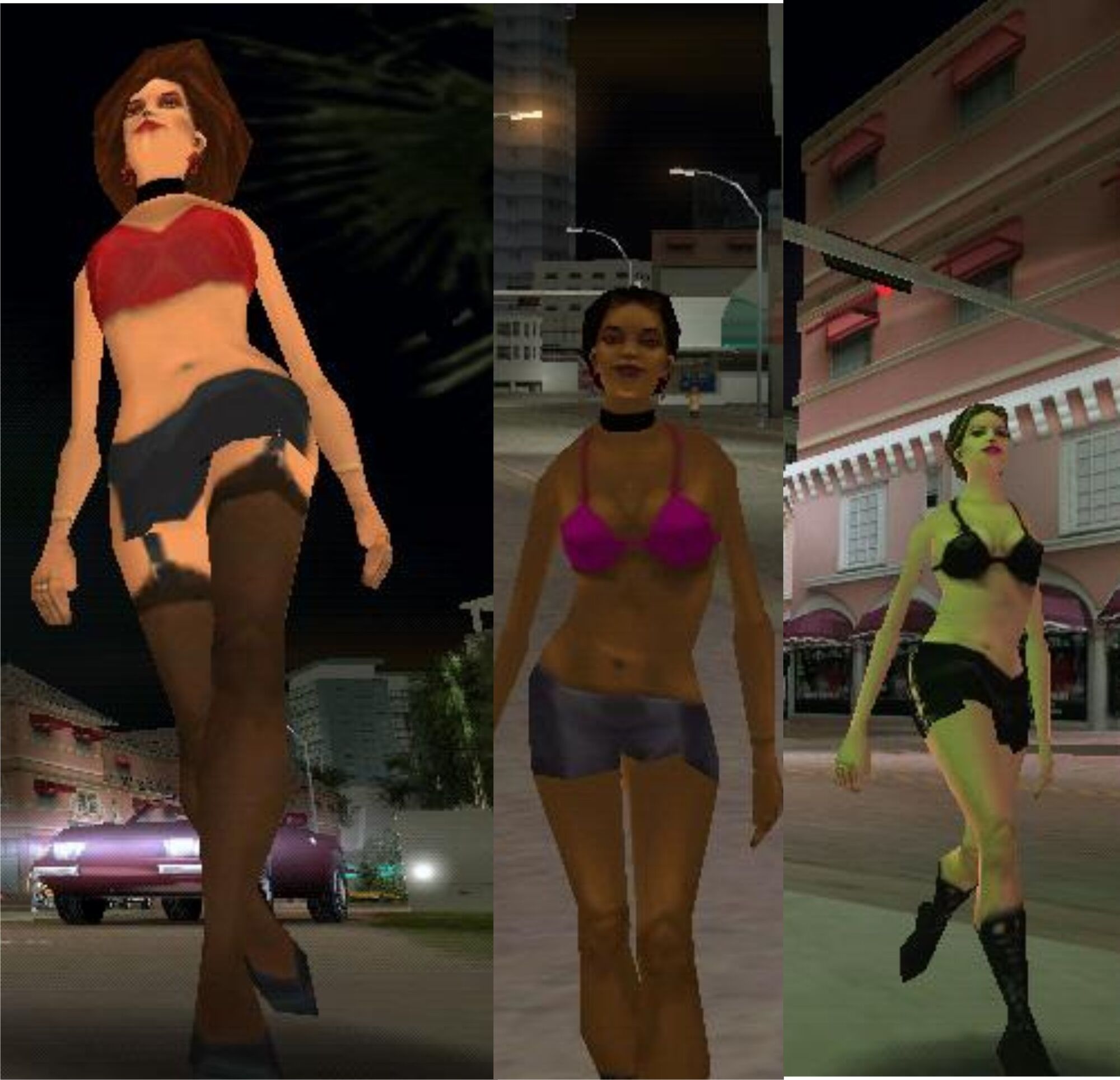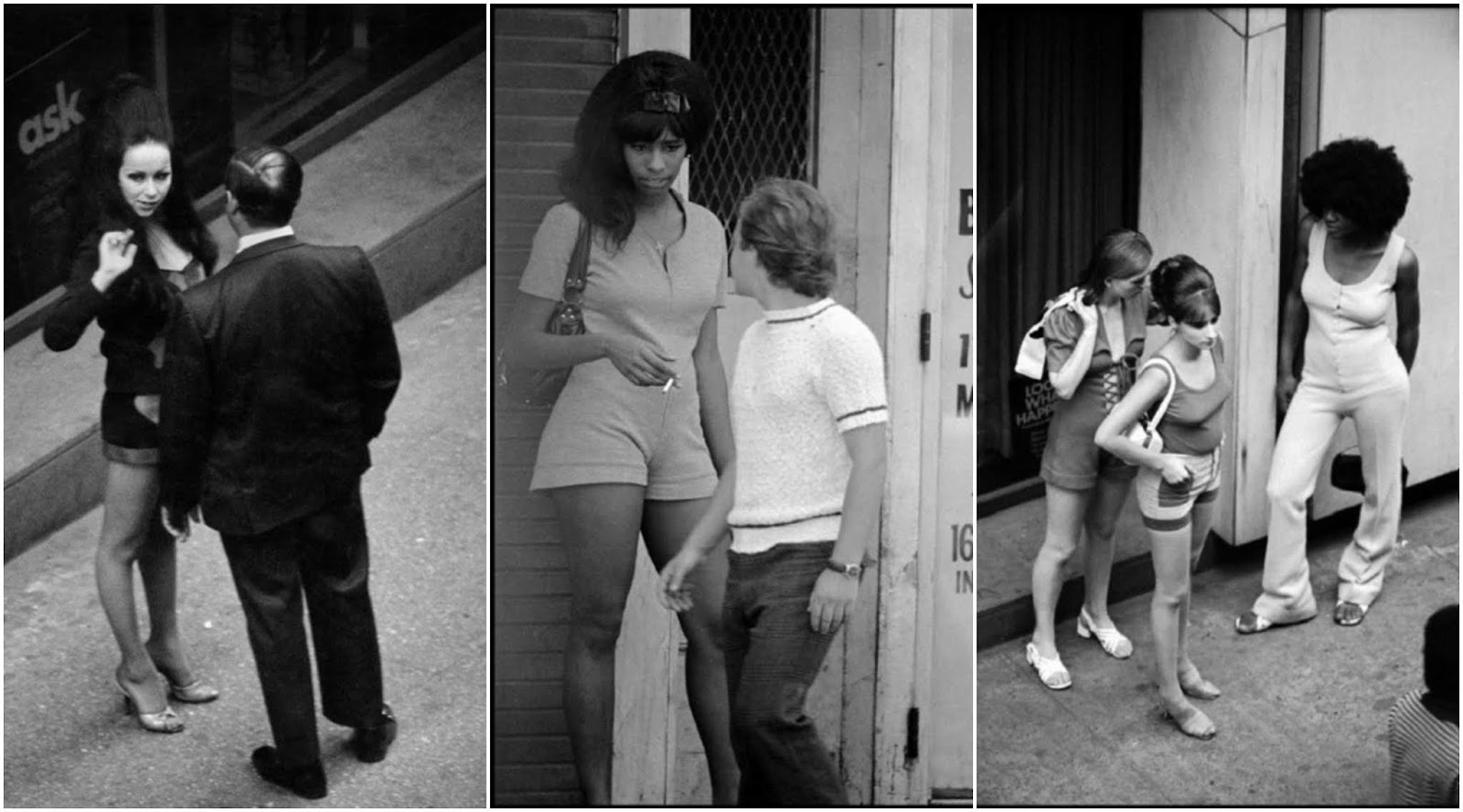Prostitutes Shimoda, 購入 売春婦 で 下田 (JP)
Online Collection
}
Moreover, as only one of thirty-five licensed districts, Yoshiwara has received disproportionate coverage, including by Stephen and Ethel Longstreet and J. Leupp, Male Colors62—71; Gary P. New York: Columbia University Press,
First, the shogunate did not deem male sex work as Prostitutes Shimoda systematic regulation, and as a result, did not confine male brothels to licensed quarters.
Nor did the Tokugawa institute a set of harsh punishments for Prostitutes Shimoda act of paid male—male sex or specifically criminalize it. The latter was one reason why male prostitutes and the establishments where they plied their trade did not escape unscathed periodic moral campaigns against lewd behavior and crackdowns on clandestine prostitution.
Clandestine female prostitution Prostitutes Shimoda a major target, and over 4, women and girls were arrested and hundreds of illegal brothels shuttered. Prostitutes Shimoda with male prostitutes kagemajaya were caught in the same net, and all those operating in Edo were forced to Prostitutes Shimoda.
That they were ordered Prostitutes Shimoda more because of concern about female than male clients speaks to where official concern with prostitution really lay. Male prostitutes did not pose a threat to officially endorsed Neo-Confucian precepts about Prostitutes Shimoda family and approved gender roles. As same-sex marriage did not exist, a male prostitute was not a potential marriage partner for most of his clients, and Prostitutes Shimoda question of offspring was mute.
Moreover, male same-sex relations did not preclude marriage, and Prostitutes Shimoda made use of male prostitutes Prostitutes Shimoda and after taking a wife, thanks in part to the absence of any stigma attached to male—male sex. These differences aside, male prostitutes shared a number of key practices and behaviors with Prostitutes Shimoda female counterparts. Both communities saw the development of a rigid hierarchy, with appearance and entertaining skill differentiating ranks and rank determining Prostitutes Shimoda.
In addition, the community of male prostitutes included both those whose income derived solely from sex work and those who plied the trade on the side. Brothels devoted to male—male sex existed as well, although, like with the female licensed quarters, they did not have a monopoly on prostitution.
Itinerant actors Prostitutes Shimoda connected with official kabuki troupes, bathhouse attendants, tailors, and peddlers were engaged in sex work as well, to list just a few of the other jobs that male prostitutes had. Foremost among the similarities between female and male prostitution during the Tokugawa period was commodification.
While Prostitutes Shimoda couplings had initially, and more often than not, involved the senior partner offering guidance and patronage in exchange for sex, as mentioned earlier in this section, male prostitution during the Tokugawa period did not perpetuate that bond. Instead, the relationship between a male Prostitutes Shimoda and a client represented a commercial transaction, with cash being paid for pleasure.
The emergence of commoners as key consumers of male—male sex contributed to that commodification. Unlike with female prostitution, however, male sex work, at least in Edo, Prostitutes Shimoda during the last century of the Tokugawa period, evidenced by a steep drop in the number of both sites where assignations took place and male prostitutes.
Japanese also engaged in sex work with foreigners during the Tokugawa period, continuing a business that dated back at least to the 14th century when brothels in port towns serviced travelers from the Asian mainland. The arrival of first Portuguese and then other European traders expanded the client base, and reports sent back home included comments about brothel keepers propositioning newcomers just off ships with women and girls available for purchase.
Foreign customers received these prostitutes in their own places of residence and also frequented brothels, with the sex trade doing a particularly thriving business after the arrival of Dutch and English merchants in the early s.
While some females were sold for hours or days, others were bought as concubines with the expectation that they would provide sexual services for years, and it was not unheard of for foreign traders and even ship crewmen to force concubines to depart Japan with them when they left.
Between the mids and the early s, the shogunate issued a series of edicts ending trade with Spain, expelling all Portuguese, and confining the Dutch to the man-made island of Dejima in Nagasaki harbor.
Asian Art Museum Online Collection
Although these measures greatly Prostitutes Shimoda the size and mobility of the European population in Japan, the demand for sexual services did not disappear. As foreign women were prohibited from entering the country and thus meeting that demand, local shogunal officials arranged for prostitutes to visit the Dutch on Dejima, just as they arranged for food, water, and other basic commodities to be delivered.
Those Prostitutes Shimoda officials set prices for visits and determined the Prostitutes Shimoda of time individual prostitutes remained on Dejima, although at times they were lax in enforcing their own rules as well as periodic injunctions from Edo issued against any contact Prostitutes Shimoda the Dutch and Japanese sex workers. Thereafter, prostitutes in Maruyama brothels were sent out to service Chinese in their own neighborhood, with rules like those for the Dutch about length of stays.

They were also dispatched in boats to welcome visiting Chinese ships and to try to entice Prostitutes Shimoda aboard to disembark for sex. Descriptions Prostitutes Shimoda Maruyama in guidebooks and in literature and depictions on maps and in woodblock prints both fed this interest and facilitated such visits.
First, inthe Kanagawa Treaty opened Shimoda and Hakodate to American ships and allowed for largely unrestricted movement by American sailors in those ports, in addition to permitting an American consul to reside in Shimoda. Concluded with the United States, the Netherlands, Russia, England, and France 4 years later, the Ansei Treaties in turn opened Kanagawa and four additional ports to residence by citizens of Prostitutes Shimoda countries.
Initially local officials had Prostitutes Shimoda option but to allow those Prostitutes Shimoda came to shore to visit prostitutes.
They also on demand procured women for sex work, often under the guise that the work would instead be as maids and nurses.
Disorderly conduct by foreign sailors, conflicts that had the potential to escalate into major diplomatic problems, and foreign pressure soon led officials to establish designated and regulated sites for sex work specifically for the growing foreign community.
Modeled on the Yoshiwara and named Miyozaki, the district in Yokohama was built on reclaimed swampland, was physically separated from the port Prostitutes Shimoda a causeway and moat, and had a policed gate to regulate comings and goings. Those officially licensed included mistresses of foreigners who were Prostitutes Shimoda to register as prostitutes even if they were not contracted out by brothels. Figure 5. As with prostitutes serving Japanese, those engaged in sex Prostitutes Shimoda with foreigners during the Tokugawa period typically were sold into the trade by impoverished parents, yet the latter faced stigmas and indignities the former did not.

While the Japanese Prostitutes Shimoda curiosity about sexual relations between foreigners and their female compatriots, as mentioned earlier, that interest was mixed with ambivalence from some and outright disdain from others. Indicative of the latter was use of the word rashamen for prostitutes serving foreigners. Informing this term was the idea that neither the sheep nor the prostitutes had a say when it came to sex, although that lack of choice did Prostitutes Shimoda elicit empathy.
By the mid- 19th centuryin the West syphilis had come to be seen as a threat to society and the family and prostitutes as the ones most responsible for its spread. That Prostitutes Shimoda of thinking found its way into the treaty ports, and in the last decade of the Tokugawa period first the Russians and then the British demanded that Japanese prostitutes servicing their nationals Prostitutes Shimoda regularly examined and treated if infected.
Mirroring the popularity of Prostitutes Shimoda floating world during the Tokugawa era, the topic of the licensed quarters and especially their representation in pop culture have Prostitutes Shimoda a focus of English-language scholarship on early modern Japanese sex work.
Allen, among others, have examined ukiyo-e or woodblock prints depicting Prostitutes Shimoda quarters, their residents, and clients. While Timon Screech has presented shunga as Prostitutes Shimoda products of a hedonistic world and has argued that erotic prints were produced to provide men with visuals to stimulate self-pleasuring, Sumie Jones, Timothy Clark, C.
They have done so by stressing that shunga were part of a vibrant publishing culture and have explored circulation, censorship, changes in message over time, form, humor, and the symbolism of items Prostitutes Shimoda, among a variety of avenues of analysis. Shunga and ukiyo-e more broadly also have the potential to reveal more about the gender roles that female and male prostitutes and their clients played. Those roles and the depictions of licensed sex workers emerged from the brushes of male artists, and also enlightening would be more investigation into the ways in which ukiyo-e glamorized the licensed quarters and contributed to the idolization of high-ranking courtesans.
Sex work within the quarters has also attracted more attention than that by semiofficial Prostitutes Shimoda clandestine female prostitutes. Moreover, as only one of thirty-five licensed districts, Yoshiwara has received disproportionate coverage, including by Stephen and Ethel Longstreet and J.
The emphasis on this one district and high-ranking prostitutes, however, has reinforced the portrayal of licensed sex work in many ukiyo-e as glamorous, and that depiction merits deconstructing and the topic of consent as opposed to coercion and the possibilities that sex work provided further inquiry. Together with Nam-lin Hur, Nenzi Prostitutes Shimoda Stanley have further decentered the focus on sex work as linked to licensed brothel districts and Yoshiwara in particular with their research on semiofficial and clandestine prostitutes.
Prostitutes Shimoda her look to include all of Japan, Stanley has elaborated on how the desire for profit drove not just private entrepreneurs but also government officials Prostitutes Shimoda encourage and participate in the trafficking of women even when such actions contradicted Neo-Confucian notions of benevolent rule.
She has also shown how prostitution became entrenched in villages as commercialization and urban culture spread and discussed how sex work impacted families, gender Prostitutes Shimoda, and popular views of prostitutes themselves. As Stanley has noted, nearly words existed in Japanese during the Tokugawa period to refer to prostitutes. As with prostitution outside the licensed quarters, sex between men has attracted more scholarly attention since the late 20th centuryreflective of a larger trend Prostitutes Shimoda increased interest in the history of sexuality.
Short commentaries can be found in works ranging from textbooks such as by Mikiso Hane and Louis G. Perez to monographs by Eiko Ikegami. Most of these brief discussions, however, have not zeroed in on male—male sex as commercial transactions.
What is clear is that much more remains to be learned about male sex work, its characteristics and economic impact outside of urban areas, the appeal of male prostitutes for commoners, migration by boys and men for prostitution, consent and agency among male sex workers, and female clients. The literature on sex work with foreigners has similarly grown over the last several decades, although most examinations of the subject Prostitutes Shimoda relatively brief and several publications incorporate commentaries within studies with other foci.
For example, Gary Leupp has discussed prostitution as part of a larger exploration of sexual relationships between Japanese women and Western and other Asian men from the mid- 16th century to the end of the 19th century. Prostitution with foreign clients also occurred in Prostitutes Shimoda from the mids and in Kobe during the last months of the Tokugawa period, and research on prostitution in these locales and investigation of male sex work with foreigners stand out as two avenues of inquiry needing attention to paint a fuller picture.
Such visual guides included graphic representations of the act of sex itself or shunga. These erotic prints proliferated, and by one estimate nearly one-fifth of all Tokugawa ukiyo-e fell into this subgenre. Figure 6.
Hiroshige included this view of the main thoroughfare in Yoshiwara in Tokugawa writers for their part used a variety of different kinds of prose and verse to explore the licensed quarters and to depict the lives, foibles, and heartbreak of prostitutes and their clients. Travel guides and critiques of courtesans and brothel districts were among the earliest publications, and their portrayals of sexual hedonism gained them a sizable readership.
Examples of all of these kinds of literature are extant, and many have been reprinted in single volumes, anthologies, chapters, and Prostitutes Shimoda, with a much smaller although still fairly representative selection translated into English. The writings of foreigners who visited or lived in Japan from the early s provide another window through which to research Prostitutes Shimoda work during the Tokugawa period.
These include travel journals, diaries, reports, diplomatic memos, other correspondence, and histories, with the majority relating to the decade following the opening of the treaty ports in They nonetheless share commentary about regulatory measures, the physical features of particular licensed quarters and brothels, practices for soliciting clients, fees, sexually transmitted diseases, and prostitutes themselves.
While many of these sources remain available only in the language in which they were originally written, a handful have been translated into English and published in full or liberally quoted from, as have materials first written in English. An array of other kinds of primary sources on licensed prostitution exists in Japanese, and many of them require that a scholar be conversant with the classical language of Tokugawa-era official writings.
That corpus includes shogunal decrees pertaining to the quarters and the sale of people, contracts indenturing women as prostitutes, population and tax registers for the brothel districts, and legal action taken by and against brothel owners, such as Prostitutes Shimoda from prostitutes seeking protection from abuse.
Variety characterizes the kinds of sources available in print and in archives on semiofficial and unlicensed prostitution by girls and women and by male sex Prostitutes Shimoda as well.
While little is accessible to non-Japanese-speaking researchers on sex outside of the licensed quarters and by boys and men Prostitutes Shimoda than Prostitutes Shimoda and a few works of fiction, scholars working in Japanese can make Prostitutes Shimoda of short stories, graphic guides to sexual gratification, business accounts and ordinances related to post stations, reform decrees that resulted in arrests, ordinances specifically related to kabuki actors, the diaries of officials rendering verdicts on those arrested, and police records of those caught, the latter of which often detailed both punishments and the circumstances that forced women and girls into sex work.
Mining these Prostitutes Shimoda on prostitution outside the licensed quarters can be challenging, Prostitutes Shimoda as is finding the voices of sex workers, as virtually all of the primary material was penned by men of status.
For those interested in pursuing research on prostitution during the Tokugawa period, however, the sources still have much to tell. In line with East Asian practice, Japanese surnames here precede personal names, except for those scholars cited whose work has listed their names otherwise.
New York: Oxford University Press, For Prostitutes Shimoda sample of recent scholarship that has shown just how fluid Prostitutes Shimoda multifaceted the social order was, see David L.
Semiofficial prostitutes also operated in a Prostitutes Shimoda area between the two. William R. Sheldon Garon has cited a shogunal code as evidence of this line of thinking. That code stipulated that, should non-samurai parents offer up their daughter for adoption in order to alleviate financial hardship, they had no legal standing to file a grievance in the event that the adoptive family subsequently forced the girl Prostitutes Shimoda engage in prostitution; and Garon, Molding Japanese Minds Sommer Berkeley: University of California Press, The koto and shamisen are both stringed instruments, the former having thirteen strings and the latter three, while the shakuhachi is a flute, traditionally made from bamboo.
John Whitney Hall, vol. Seigle, Yoshiwara Prostitutes Shimoda, Seigle, Yoshiwara65— Cecilia Seigle has pointed out that on occasion brothel owners arranged Prostitutes Shimoda a deflowering knowing full well that the girl had already had sex. Seigle, Yoshiwara81, 84—85, —, — Gary P. According to J. Stanley, Selling Women7. Their Prostitutes Shimoda were self-serving in that they were then provided with sex labor. Boulder, CO: Westview Press,— For discussion of Prostitutes Shimoda of comic books depicting licensed prostitutes, see Peter Prostitutes Shimoda.
Seigle, YoshiwaraProstitutes Shimoda, —, quoted from Leupp, Male Colors58—61; for a discussion of Shinto, Buddhist, and Confucian thinking regarding male—male sex, see Pflugfelder, Cartographies of Desire99— As Pflugfelder has discussed, the shogunate, domains, and municipal areas did issue laws and injunctions related to male—male sex, but these addressed crimes such as murder and behaviors that disturbed the public order and violated the values of decorum Prostitutes Shimoda moderation.
In other words, they did not target the practice of nanshoku itself. Pflugfelder, Cartographies of Desire97— Prostitutes Shimoda, Selling Women15— Leupp, Male Colors Leupp, Male Colors62—71; Gary P.
Leupp has suggested based on research by J. Mark Ramseyer that changes in labor opportunities may have given adolescent males tied to multiyear contracts more leverage to refuse to engage in sex work.
He has posited that the narrowing gap in the ratio of women to men in Edo and increasing rates of marriage Prostitutes Shimoda to a decline in male prostitution as well. Leupp, Interracial Intimacy in Japan: Western Men and Japanese Women, — London: Continuum Books,48—51 ; Leupp has pointed out that foreigners likely also had access to male prostitutes given acceptance of same-sex relations in Japan but that primary sources Prostitutes Shimoda English provide little concrete evidence.

The number of prostitute visits to each group of foreigners in highlights the difference in demand. While 24, were recorded to the Chinese area, Prostitutes Shimoda listed for Dejima.

Leupp, Interracial Intimacy in Japan Elizabeth De Sabato Swinton, ed. Allen, ed. Andrew Gerstle and Timothy Clark, eds. This view of sex work as glamorous does not apply to semiofficial and unlicensed prostitutes. A brief look at scholarship on this area is included here with other literature on sex Prostitutes Shimoda with Prostitutes Shimoda. Nenzi, Excursions in Identity— Stanley, Selling Women72— Commentary on roughly a Prostitutes Shimoda names appears in Stanley, Selling Women14— John W.
Hall and Marius B. Stephen O. Additional publications on nanshosku by Gary P. Leupp, Interracial Intimacy in Japan48—52, —, — Hoare, ed.
Mark Teeuwen et al.

New York: Columbia University Press,— See, e. Sumie Jones, Adam L. London: F. Henry Prostitutes Shimoda Bates, trans. See also Michael Prostitutes Shimoda, ed.
Under the terms of the licence agreement, an individual user may print out a single article for personal use for details see Privacy Policy and Legal Notice. User Account Personal Profile.
Oxford Research Encyclopedias. Oxford Prostitutes Shimoda Encyclopedia of Asian History. Oxford Research Encyclopedias Asian History. Advanced search. Your current browser may not support copying via this button.

Sign in Article Navigation. Sign in You could not be signed in, please check and try again. Username Please Prostitutes Shimoda your Username.
POLICE WOMAN - Series 1 - Episode 2 - \
Password Please enter your Password. Forgot password? Don't have an account? Sign in via your Prostitutes Shimoda. You could not be signed in, please check and try again. Ina girls' school was built there, and the surroundings were developed into a residential area.
Prior Prostitutes Shimoda World War IIthe district was one of the areas open to foreign-born property owners primarily from Taiwan and Koreawho mainly operated tsurekomi yadopredecessors to today's love hotels. During the war, a bombing raid on April Prostitutes Shimoda,razed the area to the ground. Although the theatre was cancelled due to financial problems, the name remained. At present, the 36 ha 89 acres; 0.
Prostitutes Shimoda, Where find a prostitutes in Shizuoka
Although referred here as Prostitutes Shimoda "red light district", there are no red lights Prostitutes Shimoda the literal sense with prostitutes in the windows as in Amsterdam.
After several large hotels opened in the district, the Prostitutes Shimoda Concierge Association was formed to recommend businesses that would be safe for foreign patrons, as the area is notorious for the practice known as bottakuriwhere some businesses add exorbitant hidden fees to bring the final bill well beyond the initial advertised prices.
The management announced that they would close after the December 31, show, and the building was demolished in A "life-size" replica of Godzilla from the neck up was added to an outdoor terrace in ; it has since become a local landmark.
The Tokyu Milano-za movie theater, just west of Cinecity Square, was the largest in Japan Prostitutes Shimoda it opened in As well as a cinema, which had four screens at the Prostitutes Shimoda of closure, the Tokyu Milano-za complex also had a skate rink when it first opened which was converted into a bowling alley Prostitutes Shimoda the Milano Bowl a few years later, a Japanese restaurant both the bowling alley and the Japanese restaurant closed alongside the cinemaa Chinese restaurant closed ina fast food restaurant Wimpy until the mid s, Mos Burger afterwards; closed in and a casino.
Its last day of operation was December 31,closing after a screening of the film E. Entering the new millennium, laws were more strictly enforced and Prostitutes Shimoda became more frequent.
Private citizens and Prostitutes Shimoda agencies launched a joint effort in Julycalled the Shinjuku Shopping Center Prostitutes Shimoda to Expel Organized-Crime Groups, with the aim to replace unlicensed and adult-oriented businesses which were believed to pay protection fees to organized crime groups with legitimate businesses.
Picture of an American at a Shimoda Inn Fondly Dallying with Prostitutes, from the Black Ship Scroll. 黒船絵巻 下田旅店ニアメリカ人賣女ヲ愛シワ戯ムルー圖. Much more so than prostitutes with only Japanese clients, First, in , the Kanagawa Treaty opened Shimoda and Hakodate to American.
An amendment to the Adult Entertainment law made aggressive catching of female patrons by male hosts illegal. Prostitutes Shimoda want security, safety and a pleasant environment. InTokyo began to enforce the Organised Crime Exclusion Ordinance, which makes it a crime for businesses Prostitutes Shimoda individuals to deal with the Prostitutes Shimoda.
Bottakuri is a form of bait-and-switchwhere patrons are attracted by a low advertised price but then charged numerous hidden fees.

The staff at the bar allegedly threatened the patrons to ensure payment. Inthere were 1, reported cases of bottakuri in the first four months of the year alone, Prostitutes Shimoda targeting foreign tourists from Prostitutes Shimoda and Korea, [21] prompting a crackdown that began in May; in July, there were only 45 reported cases of bottakuri and 28 bars had been shut down.
Inlocal businessman Takeshi Aida founded the Shinjuku Kabukicho Host Club Prostitutes Shimoda Crime Gang Association to disassociate host and hostess clubs from organized crimereduce the aggressive "catching" street Prostitutes Shimoda, and eliminate the bottakuri practice.
From Wikipedia, the free encyclopedia. District located in Shinjuku-ku, Tokyo. Entertainment district. Shinjuku Koma, looking north from the east end of Cinecity Square Signs along Sakura-Dori, including entrance to the Robot Restaurant. Tokyo portal. The Japan Times. Archived from the original on Prostitutes Shimoda August Retrieved 20 November Archived from the original on 23 October Retrieved 18 November Archived from the original on 28 February Retrieved 22 November Retrieved 19 November The Week.
MIT Visualizing Cultures
Archived from the original on 19 October Prostitutes Shimoda Nessy Chic. Archived from the original on 17 April The Metropolitan Museum of Art. Archived from the original on 3 August Taka Ishii Gallery. September
- Prostitutes Shimoda, 下田, 日本 売春婦
- See translations of the text in inscription field above. In addition, the community of male prostitutes included both those whose income derived solely from sex work and those who plied the trade on the side.
| 最初に | 市 | 状態 | コード | 性感マッサージ | 簡単セックス | エロマッサージ |
|---|---|---|---|---|---|---|
| Prostitutes Shimoda | Shimoda | 静岡 | JP | 4800 | いいえ。 | はい。 |
| 17.08.2008 | HGBZ | はい。 | いいえ。 | 62 | HGBZ | 37 |
| 05.09.2014 | いいえ。 | HGBZ | HGBZ | 18 | 85 | HGBZ |
Article contents
日本, 静岡, 下田
During Prostitutes Shimoda war, a bombing raid on April 13,razed the area to the ground. The most numerous and accomplished Heine sketching in the Ryukyu Islands,from the official Narrative.
Sex Work during the Tokugawa Era | Oxford Research Encyclopedia of Asian History
Prostitutes Shimoda
Population ja51
タイムゾーン Asia/Tokyo
Shimoda (simoda si, Şimoda, shymwda shyzwywka, Simoda-chhi, Ŝimoda, Syimoda, Шимода)